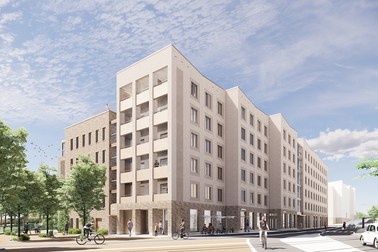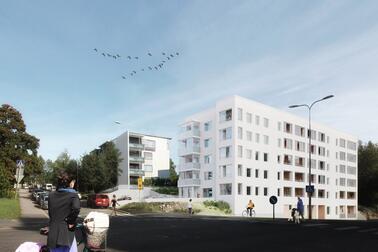
In Helsinki, long-term housing planning is guided by the Implementation Programme on Housing and Related Land Use, which is prepared for each council term. The programme outlines how much and what kind of housing will be built in Helsinki over the following four years.
For 2024–2027, the programme’s vision is that Helsinki will grow in a socially sustainable manner, and that a wide variety of high-quality housing options will serve as the city’s vitality and attraction factors. In addition, every Helsinki resident will have the opportunity for good housing, and Helsinki will offer families well-functioning living environments. Helsinki is determined to develop residential areas, and regional segregation will not increase. Housing construction is carried out by paying attention to natural, recreational and cultural values.
To implement the vision, the programme includes four objectives: socially sustainable housing production, high-quality and attractive housing, the development of residential areas and suburban regeneration, as well as sufficient housing production and sustainable growth.
A wide variety of housing in all regions
In socially sustainable housing production, Helsinki’s tenure type target for 2024–2027 is 45–50% privately funded owner-occupied dwellings and 40% rental dwellings. Long-term regulated ARA rental dwellings account for 20–25% of rental dwellings, and the target is 25%. The share of intermediate housing is in the range of 10–15%. As a result of previous decisions, right-of-occupancy and Hitas housing production, which is included in the intermediate model, will be completed during the programme period.
The target for the city’s own housing production is 1,500 dwellings in 2024–2027.
Helsinki promotes the regional diversity of tenure types in all regions. Homogenous residential areas are avoided.
High-quality implementation of housing planning
Helsinki will produce high-quality and attractive housing through ensuring the quality of housing planning in projects carried out in the city. In dwellings, Helsinki requires a good basic quality, sufficient amount of light and furnishability.
A wide variety of dwelling types will be ensured in all tenure types.
Suburban regeneration will continue in the same areas
During the programme period in 2024–2027, Helsinki will continue the development of residential areas and suburban regeneration in Malminkartano and Kannelmäki, Malmi, Mellunkylä and Meri-Rastila. Through suburban regeneration, Helsinki aims to prevent regional segregation, and it means the comprehensive development of areas.
Helsinki will ensure the prerequisites for building approximately 25% more dwellings in suburban regeneration areas by 2035. Each suburban regeneration area has its own regional key projects, which will be implemented by securing a sufficient level of investment and other resources. The regeneration projects take into account the quality and accessibility of green areas.
Target is 7,000 new dwellings
To ensure sufficient housing production and sustainable growth, Helsinki aims to start the construction of 7,000 new dwellings every year. Helsinki will create the prerequisites for the realisation of this target through city planning, the provision of plots and making the plots ready for construction.
At least 55% of the dwellings completed annually will be completed as infill construction. Helsinki will promote the growth of the inner city’s population by further facilitating alterations and attic construction through lighter requirements.
As a rule, Helsinki will focus construction in areas other than green areas. The most valuable natural areas will be spared from construction, and marine landscapes will be preserved.


